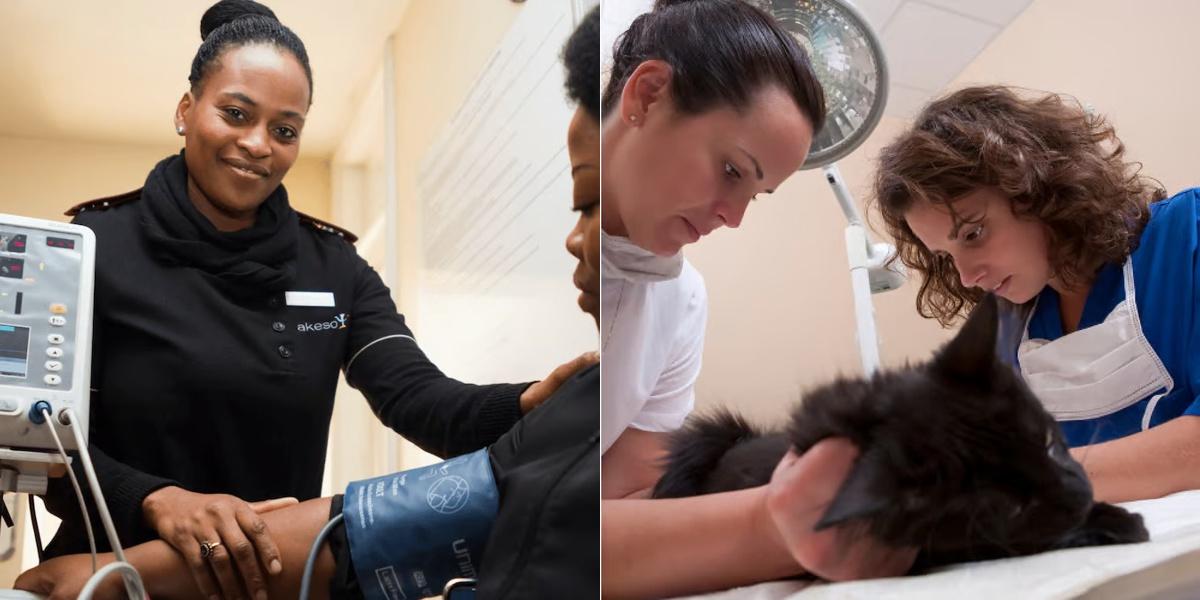Patient Care Technician vs Veterinary Assistant

Key Points:
- Patient Care Technicians assist nurses in hospitals; Veterinary Assistants support veterinarians in animal clinics.
- Patient Care Technicians typically earn higher salaries than Veterinary Assistants.
- There are more job openings for Patient Care Technicians due to the growing healthcare industry.
- Both jobs require in-person training, but Patient Care Technicians may have more online course options.
- Patient Care Technician training is generally more expensive and takes longer than Veterinary Assistant training.
Are you interested in working in a healthcare or animal care field but unsure which career path to pursue? Two popular options to consider are becoming a Patient Care Technician or a Veterinary Assistant. While both roles involve caring for others, there are some key differences between the two. In this blog post, we will explore the roles of a Patient Care Technician and a Veterinary Assistant, their job descriptions, required education and training, career outlook, and salary potential. By the end, you should have a better understanding of which career path aligns best with your interests and goals.
Patient Care Technician vs Veterinary Assistant: Career Outlook and Salary
Patient Care Technician:
According to the Bureau of Labor Statistics (BLS), the employment of Patient Care Technicians is projected to grow 8 percent from 2020 to 2030, which is faster than the average for all occupations. This growth is mainly due to the aging population and the increased demand for healthcare services. The median annual wage for Patient Care Technicians was $32,050 in May 2020, with the highest 10 percent earning more than $49,750.
Veterinary Assistant:
The BLS does not provide specific data for Veterinary Assistants, but the employment of veterinary assistants and laboratory animal caretakers is projected to grow 16 percent from 2020 to 2030, much faster than the average for all occupations. This growth is attributed to the increasing demand for pet care services and the expansion of veterinary clinics. The median annual wage for veterinary assistants and laboratory animal caretakers was $28,590 in May 2020, with the highest 10 percent earning more than $41,490.
Final Thoughts
Choosing a career path as a Patient Care Technician or a Veterinary Assistant requires careful consideration of your interests and goals. If you enjoy working with people and want to make a difference in the lives of patients, becoming a Patient Care Technician may be the right choice for you. On the other hand, if you have a passion for animals and want to contribute to their well-being, a career as a Veterinary Assistant may be more suitable. Both careers offer rewarding opportunities to provide care and support to others, so it ultimately comes down to your personal preferences and career aspirations.
Dreambound's program is accessible in diverse locations. Take a deep dive into these blogs for comprehensive insights into the two vocations, covering their requirements and guidance on joining:

Jessa Guzon is a member of the School Growth and Customer Success Team in Dreambound. She finds joy in assisting both schools and students in reaching their goals by answering their queries and connecting them with the right people. Outside her professional role, Jessa is a happy-go-lucky person with a thirst for adventure.




